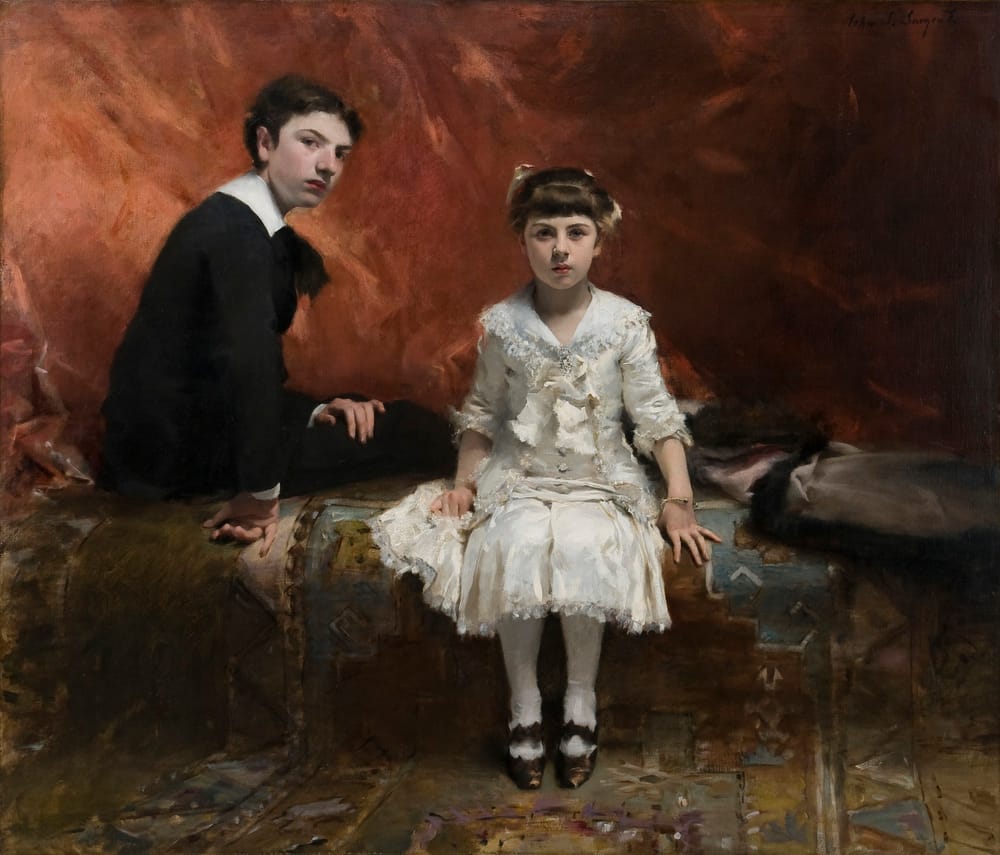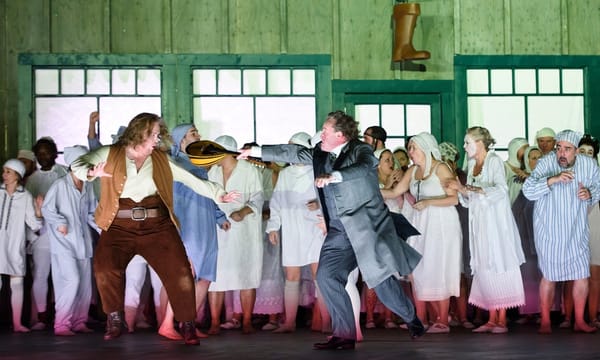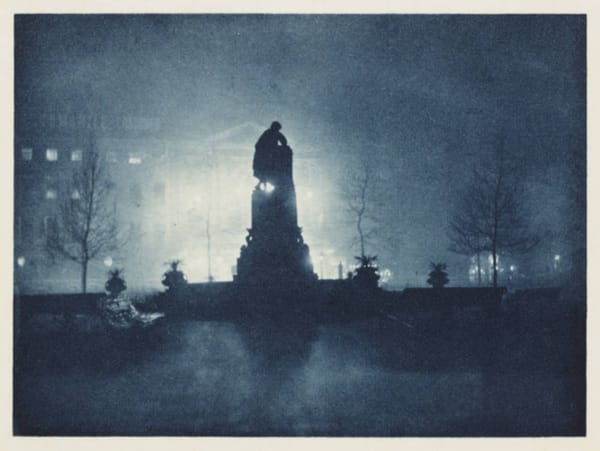Sargent – A Bridge To The Modern
Indira Mallik finds that Sargent was not all that he was painted to be

John Singer Sargent is not often included amongst the great painters of the late 19th century. It’s an exclusive club. Monet, Renoir, Picasso, Degas, Rodin, Cézanne, van Gogh, and Klimt amongst others dominate the public perceptions of art in the 1880s-1910s, and with good reason. Some of the biggest movements in art history took place in that period; it was the birth of modern art in the form of impressionism, the beginnings of cubism. At the turn of the century the age of the avant garde had started sweeping through Europe, leaving Sargent looking somewhat stuck in the archaic realism of yesteryear. He and his paintings were regarded by many of his contemporaries as accomplished but lightweight – pandering to his rich patrons rather than contributing to the innovative canon of European art of the era. Modern critics have often taken the same view; Sargent has gained a reputation for painting portraits that depict the moneyed literati and society heiresses of Paris and London. A virtuoso but with an oeuvre that is staid and facile.
Sargent: Portraits of Artists and Friends at the National Portrait Gallery tries to dispel this. It mostly succeeds. The subjects themselves are what we would expect from Sargent; the paintings number his artsy bohemian friends, a distilled ‘who’s who’ of European society of the age. Amongst Sargent’s sitters are Henry James, Treasure Island’s Robert Louis Stevenson, Auguste Rodin, Claude Monet, and WB Yeats, considered by some the greatest English poet of his generation. Each painting is charged with expression and character, and each figure has arresting eyes that pierce the viewer, anchoring them to the moment depicted.
Each figure has arresting eyes that pierce the viewer.
Andy Warhol said of Sargent “[he] made everybody look glamorous. Taller. Thinner.” Indeed, within the nearly 70 portraits exhibited, there is no unsightly mole or wrinkle in sight. Sargent seems to conjure the sitters from pure light, illuminating their face and drawing them out of their shadowy backgrounds with the skill of a sculptor. The paint suggests at, rather than delineates, the contours and planes of his subjects. Sometimes hands disappear altogether in an insouciant flourish into folds of clothes, the colours whirling and smudging into one another. He sometimes leaves parts of the canvas unpainted, as in his portrait of Vernon Lee, which captures the intelligence and brilliance of the art historian, woman of letters (Vernon Lee was the pen name of Violet Paget) and feminist, all with the greatest economy of brushstrokes.
The influence of Sargent’s training with the celebrated French society painter Charles Auguste Émile Carolus-Duran is apparent. Carolus-Duran’s method of teaching was at the time radical; an admirer of Velázquez, he insisted that his pupils draw and paint at the same time with a loaded brush on unprepared canvas. His emphasis was placed on capturing light on the subjects, expressing the object through fluid painting rather than seeking to create a solid mass or a precise tonal structure.
His emphasis was placed capturing light on the subjects
Sargent employs this technique with mastery in one his best earlier portraits: a commanding likeness of Carolus-Duran, which bears the touching inscription “to my dear master... [from] his affectionate pupil”. Much of Carolus-Duran’s style is evident in Sargent’s work; both men’s portraits depict the sitter glancing out from the canvas from dark, sparsely painted of backgrounds. They paint in the vein of Velaquez, the Spanish master by whom Carolus-Duran was inspired. Velaquez’s mid-17th century Portrait of Juan de Pareja in particular bears great resemblances to the style that Sargent favoured for much of his career. One of his fellow students remarked in 1847 “Mr Sargent is about 18 years old and one of the most talented fellows I have ever come across; his drawings are like old masters, and his colours are equally fine”. And Rodin commented that Sargent was “the Van Dyck of our times” after seeing the painting The Misses Hunter.
Sargent straddles the line between realism and impressionism, never quite committing to either. However his work is never simply reiterating the old, and his paintings are profoundly modern.
His double portrait of the Pailleron children is nothing like what children were depicted as in the 19th century. They stare out from the canvas, lit spookily, half in shadow, their expressions sombre and knowing, and their complexions deathly pale against the rich velvet of the background. This haunting portrayal with its psychological intensity is thought to have inspired Henry James’ gothic horror story Turn of the Screw. Similarly, oversized lilies hang over the girls in Carnation, Lily, Lily, Rose, bringing a hint of danger into the serene picture of two young girls lighting lanterns in the twilight.
Sargent’s paintings of Robert Louis Stevenson show him at his most experimental; in Robert Louis Stevenson and His Wife, his usual way of focusing on the sitter’s face is abandoned for a staging that seems incidental, almost photographic. The writer is shown looming, mantis-like, thin as rake, and walking towards one end of the canvas; on the other end his wife folds herself into a chair, hiding her face with a shimmering golden veil. The space between the figures is charged with tension, and an open door takes centre frame implying unknown secrets and limitless possibilities.
Sargent made everybody look glamorous. Taller. Thinner.
Even in his more conventional paintings, theatricality is ubiquitous. The sitters become larger-than-life versions of their characters. Warhol may have thought Sargent to be glamourizing his sitters, but he was sometimes far from flattering, remarking that he lost a friend every time he painted a portrait of one. It is not to be forgotten either that he painted Portrait of Madame X, the now notorious painting of Virginie Gautreau in a plunging black dress which so scandalised French Society that the sitter was from then on entrenched in gossip, and Sargent was forced to leave Paris.
The National Portrait Gallery exhibition seeks to show Sargent at his least conventional; these painting are after all, un-commissioned, and Sargent presented many of them to his friends as gifts. The collection does show him at his most fluid, but also paints him as the perennial watcher – forever on the outside looking in. Nowhere is this more highlighted than in his portraits of Monet. He depicts the great impressionist painting_ en plein air_ and sur le motif, some of the only evidence we have that Monet did so. Sargent admired Monet immensely, collecting many of Monet’s works and later switching to his style of painting out in the open. In these painting we see almost a desire to imitate Monet’s characteristic use of colour and brushstrokes; the grass is painted in the hues that Monet is known for, and this marks Sargent’s desire to move into impressionism, a transition which he never quite mastered despite his best efforts. Monet was said to be quite irritated by Sargent’s frequent desire to learn from him, and he wrote to his wife complaining that Sargent “is making an extraordinary inquiry about the use of yellow and green and asking me if I am coming to London; he needs me to advise him on the pictures he is working on”.
His work is never simply reiterating the old, and his paintings are profoundly modern.
Sargent was in many respects the end in the line of the old masters; in the vein of Velaquez and Ingres, he was one of the last great society painters. His paintings did not test the boundaries of art as many his contemporaries did, but his work is no less for it; by sticking staunchly to realism whilst modernism directed his contemporaries, Sargent created a dialogue between classic and modern, bringing together in his work Van Dyck, Velazquez, Monet, and Degas using visual quotations, thereby reinventing realism for the 20th century.
His painting show a great humanism and empathy for his subjects, and it is his affection for them that shines through to confer to them an ageless glamour. Whatever his shortcomings, this exhibition shows Sargent at his best.
Sargent: Portraits of Artists and Friends is runnning at the National Portrait Gallery until 25th May. Tickets £14.50; £13 for concessions.









